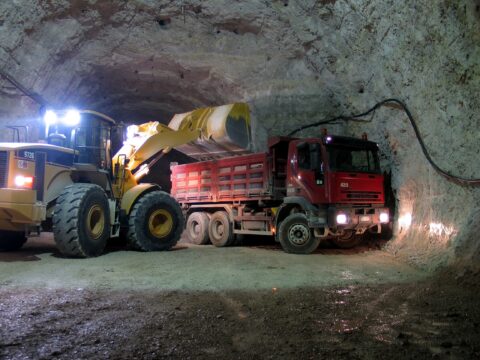Safety
How The Industry Is Eliminating Fatigue-Based Accidents
Of all the many dangers employees face on a mine, perhaps the most insidious and risky threat is that of simple fatigue. Understanding this, it is no surprise then that Anglo American has placed a premium on fatigue management.
At the company’s Kolomela mine, which operates three opencast iron ore pit mines, as well as the plant where ore is processed for production, many dangerous tasks are undertaken daily, from drilling and blasting, loading and hauling to crushing and screening and final dispatch via railway.
24/7-staffed fatigue centre
Because the mine operates on a 24/7 basis, the potential for fatigue-related safety incidents is quite significant and this risk must be managed. A key element of the mine’s Fatigue Management Programme (FMP) is the Fatigue Centre, which has medical personnel available on-site 24/7. Among the services available are a nap station, basic-to-basic supplements, chronic disease monitoring, a gym and a weigh-to-go programme.
Clinical data is captured constantly and regular reports are drawn up. These include a weekly report on fatigue clients reporting at the centre, monthly reports on the number of clients seen, reports on the times clients visited the centre and the outcomes of the assessments. A daily register of all services rendered is also kept, so that should a fatigue report be needed, for example, for an incident investigation, it will be available.
Managing fatigue
Several inter-related elements inform the way the mine designed and maintains its successful fatigue management programme.
Senior management buy-in was essential and Kolomela’s GM was designated as the owner of and the person accountable for the programme. The GM has since appointedthe mining manager as “champion” of the programme, serving as chairperson of the fatigue committee.
The programme also receives visible support, endorsement and allocation of sufficient resources to ensure its sustainability and optimisation and ongoing monitoring. Several systems have also been put in place for managing fatigue, notably the Predictive Risk Intelligent Safety Module (PRISM). All employees and contractors must have a PRISM baseline, which is established by a series of ten tests that employees must perform over a total of five days.
The level of alertness of every employee is measured against their PRISM baseline. Employees’ contact cellphone numbers are retained on the system, as are the contact details of their reporting lines. A warning SMS can be sent to an employee or, in a case where the measurement is high and severe, to both the employee and their supervisor. Should the employee not take action, the message is escalated to the head of department. If no further action is taken, an SMS will be sent to the GM.
Other fatigue-measuring solutions include the MR688 Monitor, which is installed inside a truck cabin on the dashboard in front of the operator. This is monitored from the dispatch control room via GPS. The monitor is activated if the system cannot pick up eye contact and the truck speed is recorded as above 10km/h.
Once alerted, the operator in the dispatch control room uses the fatigue management Trigger Action Response Plan (TARP), which sounds repeated alarms to warn the operator that they must stop the truck at a safe place and be taken to the fatigue centre for assessment by the fatigue nurse.
Finally, there is the self-reporting option, whereby employees report to the supervisor or fatigue nurse when they feel tired, have slept for less than three to six hours or are not feeling well. Their supervisor must allow them to consult the fatigue nurse for assessment.
Unlike in the past, fatalities no longer have to be an inevitable byproduct of mining. At Anglo American, we are committed to the principle of zero harm – the implementation of the FMP and Fatigue Centre demonstrates our ongoing focus on eliminating fatal risks and commitment to reimagining mining to improve people’s lives.





